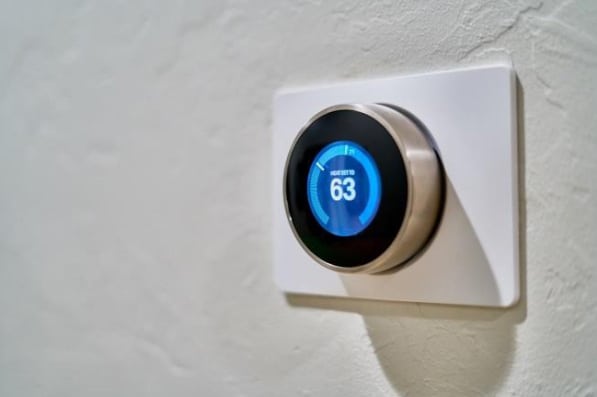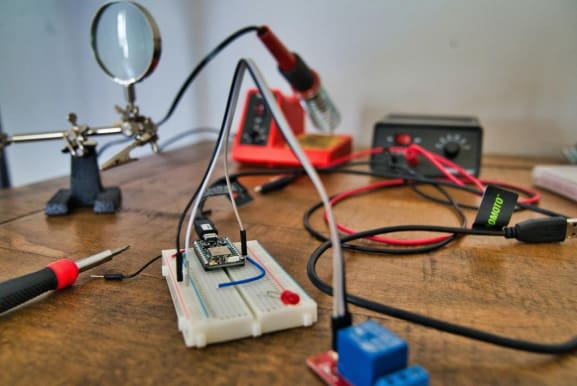
The Internet of Things in Engineering is embedded with sensors, software, and other technologies for the purpose of connecting and exchanging data with other devices and systems over the internet together constitutes the Internet of Things (IoT). These physical objects range from ordinary household items to industrial tools. According to an analysis, more than 7 billion connected IoT devices are at present. It is expected that it will grow to 10 billion by the end of 2020 and possibly 22 billion by 2025.
Advantages of IoT:
The Internet of Things in Engineering has emerged as a new technology where integrating the devices using the internet in an active manner holds the key. The various advantages of the IoT are:
- Time-saving: The probability of making the right decision lies with the data. The more information, the easier it is to make the right decision. Knowing what to bring from the confectionery shop without checking on your own, not only saves time, but also brings ease to life.
- Ease of life: The computers through the embedded sensors on different products can gather information on the expiration date of products before one consumes them. Hence it improves the quality of life.
- Cost-effective: Money is the new god. This technology could replace the manpower who are in charge of monitoring and maintaining supplies.
- Improved Device Communication: IoT is a web of physical devices connected to each other and interacting. Hence improves device-to-device communication.
- Gathering Useful Data: The more the information we are available with, the better and informed choices one can make about the policymaking, governing issues, and challenges, etc.
- Automation: The digital control with wireless support made control and automation of large data possible. The machines can lead a faster and timely output and reduced the machine-man interaction disorganized gap.
The Internet of Things potential has a lot to offer for making life and technology easier than ever. Without any second thought, such positive technology is the one that most people can look forward to.
Application of IoT in Mechanical Engineering:
- Ease of governing the machines: The motors, valves, pumps, and other traditional components are fastly employing the operating through software. These software-driven controls through IoT could be controlled even from far distances and ensuring the proper operation of the machine.
- Increased communication: IoT enhances the ability of the manufacturer to communicate with the product and production line. IoT enabled commercial PLM systems can significantly bring value to the work done by the mechanical engineers, especially with regard to product quality and reliability design activity. The utilization of IoT in product development contains a huge potential to further enhance product quality and reliability.
- Strengthening ethics: Further, the IoT-enabled commercial PLM system will help in maintaining the ethical sense of mechanical engineers and understand the importance of physical data in the field.
- Field testing: For the field testing of the mechanical design, the IoT-enabled sensors can help the mechanical design engineers to fix the issues and improve the features further.
- Imparting value to digital twin technology: The IoT can become the backbone of the “digital twin” type of technology which contributes to new mechanical engineering style, making new digital engineering innovation.
Accordingly, mechanical engineers must assess their design engineering based on “physical data” in the real world with “virtual data” with the help of the IoT.
Application of IoT in Electronics Engineering:
The IOT and Applications has already revolutionized the field of electronics engineering and in the coming times, the expectations are that it will make the field more efficient and smart.
- Home Automation: One of the basic applications is home automation embedded with IoT. It will give the real-time status of the home appliances and significantly helps in reducing the electricity bills.
- Improving Security: The security systems using IoT can help the surveillance of the home, offices, and other establishments. Imagine the presence of a strange person in front or backyard of my house is notified to me and immediately the image taken by the surveillance camera is sent to me.
- Instructing Solar Panels: The solar panel can be rotated according to the clock so that it can produce electricity efficiently. Embedding of the air pressure sensors can help to show the wind speed and dust along with it. Accordingly, the solar panels can be covered in order to avoid dust deposition on it through the IoT-enabled devices.
- Microcontrollers: All the micro-controllers in a device can be controlled, instructed, and monitored through IoT.
Application of IoT in Electrical Engineering:
- IoT SCADA: SCADA is centralized monitoring and control of remotely located generation and transmission systems. It consists of various parts such as actuators, sensors, controllers, and communication devices. The IoT SCADA is a step beyond the SCADA. The IoT SCADA provides real-time signal acquisition and data logging using the internet and IoT servers. IoT integrates the devices, machines, sensors, and other electrical equipment with the internet.
- Smart Metering: Traditional electrical equipment like electrical units reading the meter, when integrated with IoT reduces operational costs by managing the meter from the electricity office. It also detects energy theft and losses.
- Smart Grid: The power generated can be utilized in an optimum manner as per the load demand with intelligent equipment devices installed at each of the sub-station. The IoT can automate these substations and can better address the optimum distribution of power to these sub- stations especially during peak hours.
Application of IoT in Civil Engineering:
The IoT has a huge impact on the field of civil engineering. Few of them are:
- Preventive Maintenance Programs: IoT can be used for preventing the breakdown. The different sensors can be used along with intelligent devices to anticipate the breakdown and hence putting preventive maintenance in place. These sensors can collect the data in real- time and then report it to the maintenance crew.
- Real-Time Construction Management Solution: The timely completion of the construction saves a lot of money, and brings efficiency to the system. Many tasks needed to be completed such as tracking and measuring building supplies or tagging field equipment etc. The use of IoT technology can reduce the manual burden of tracking, measuring building supplies, etc by collecting relevant information in real-time and delivering it to the people concerned. It will also help the management and decision-makers to improve or correct the project’s course.
- Automated documentation: The reports based on filling out the blanks can easily be filled up using the data routed through IoT. Such reports can be used for inspection, insurance, and liability events, etc.
- Workers’ safety: The construction sites are full of risk as an accident can happen at any time. The supervisors and managers need to be very careful about this. The real-time tracking of the worker can be accomplished using the IoT and ensuring the safety of the workers.
- Decision Making: IoT can be deployed to extract the insights of the places which are more complex and need a thorough understanding. For example, during the construction of a dam, there is a need to monitor the surrounding area for any stress developing because of such a project. It will help the decision making body for taking further decisions.
Application of IoT in Biomedical Engineering:
IoT in biomedical is one of the current topics of research. According to a recent report, the adoption of IoT brings exceptional changes in operational efficiency. Few of the application are:
- Wearable devices and IoT: The e-healthcare tracks the e-health status. The various wearables are currently used in e-healthcare. The integration of wearables with the IoT is the emerging area of research in biomedical with IoT. The wearables devices recording blood pressure, heart rate monitoring, glucometer, etc give the patient access to personalized attention. Such devices also remind about the calorie count, exercise check, variation in blood pressure, and appointment with doctors.
- Superlative Care: The deep use of IoT in the field of biomedical will surely bring better healthcare and timely intervention of the doctors. It will break the boundary of patient-doctor interaction limited to visits. It empowers the physicians to deliver superlative care.
- Faster Disease Diagnosis: Continuous monitoring of patients using IoT helps in early diagnosis of disease based on symptoms.
- Lesser stay in hospital: Using IoT to monitor the patient from a remote location helps in reducing the length of staying at the hospital and prevents re-admission. Continuous health monitoring opens the door of proactive care.
Internet of Things is a concept that paves the way for real-world things connected to each other through the virtual world and interacting actively. The IoT has the potential to transform and revolutionize all the engineering fields and hence making the life of people easier. It facilitates monitoring, evaluation, recording, taking informed decisions, and governance to the user. It enhances efficiency, reduces operational and labor costs, and saves time. But there is a need of exploring the field to a new high. Such as in the case of the biomedical field, there is a lot of scope of taking the IoT to a new level. The biomedical field is one of the crucial areas where one needs to introduce the IoT as soon as possible so that effective and timely care be provided to the patients. Integration of devices using the internet will surely improve efficiency, but there will be associated challenges with it such as security of data stored in the cloud or the data moving a to-and-fro infinite number of times across the internet.
Also Read: The Growing Role Of IoT After Covid-19
